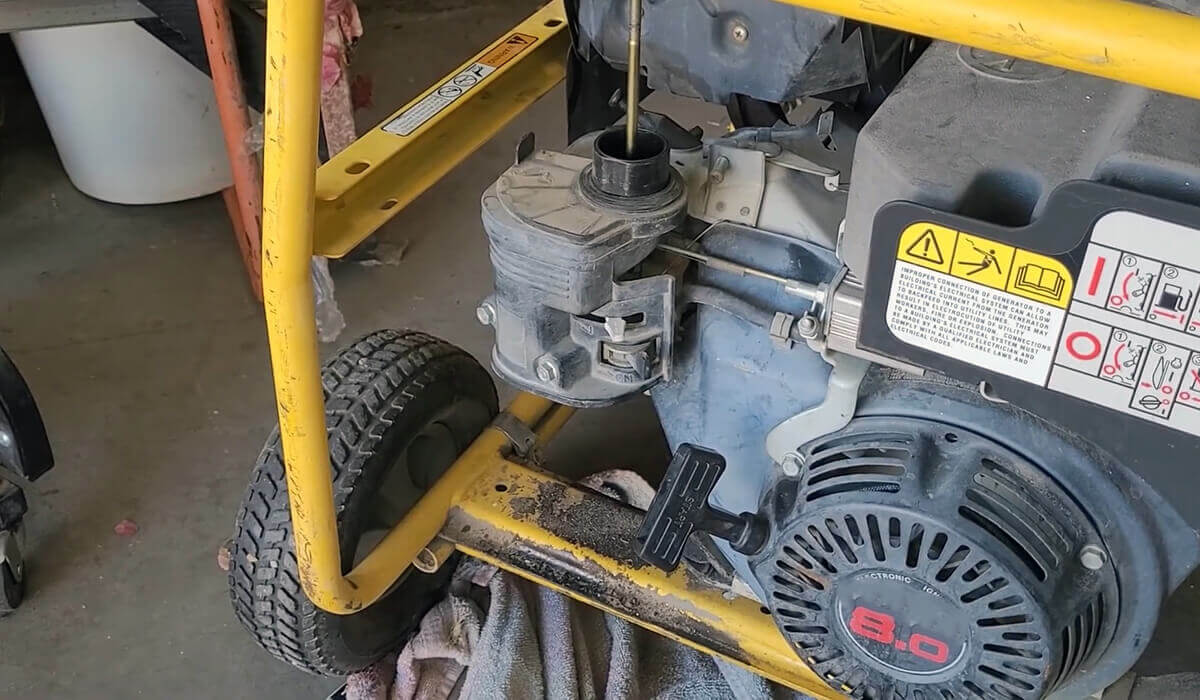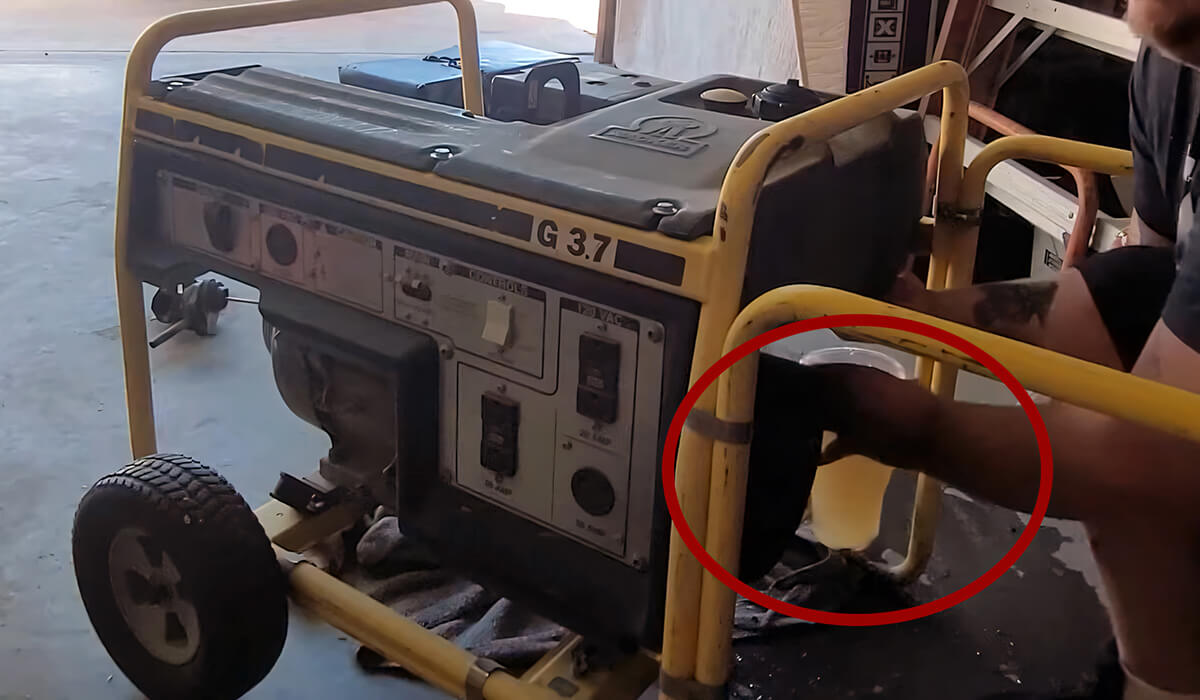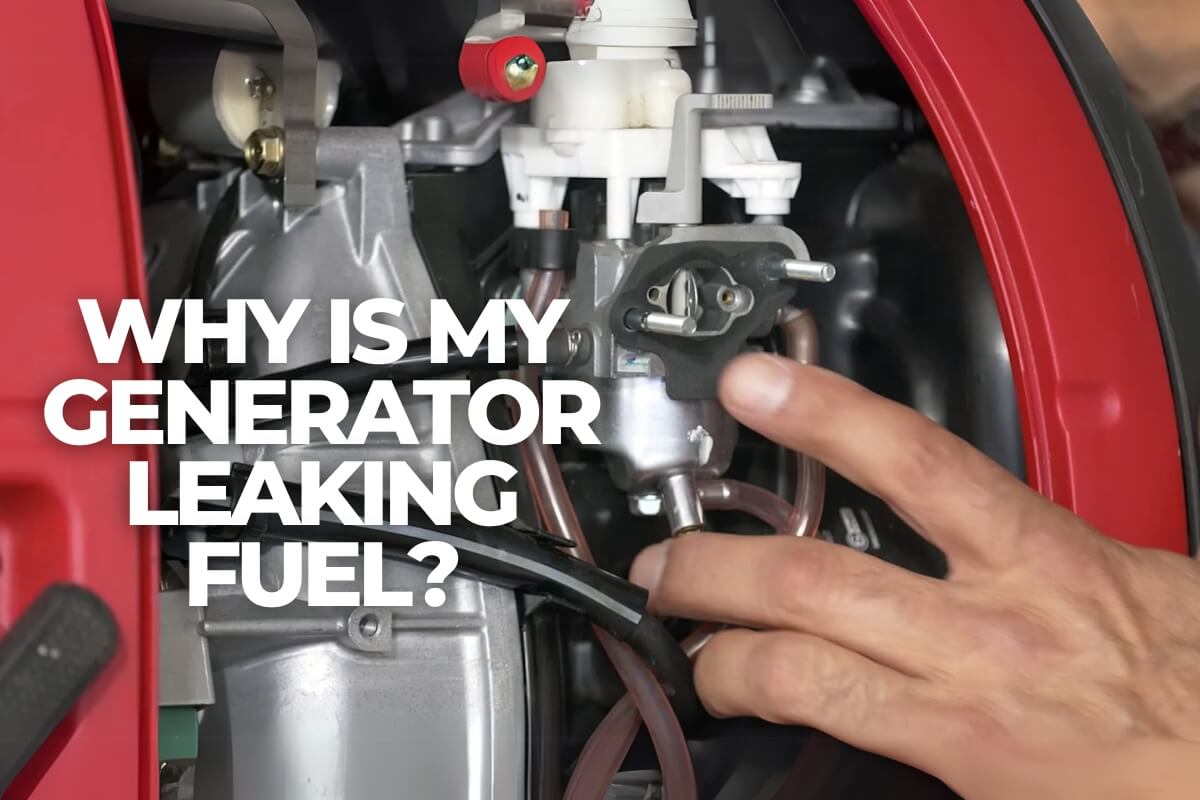Why is there water in my generator gas tank
- BY BISON
Table of Contents
Water in the gas tank is much more common than many people realize, and even if you store your generator safely indoors, away from rain and moisture, water can still get into the fuel system. In this case, your generator may not start or may make a popping sound, run erratically, and then shut down. So how does this happen?
In this article, we’ll break down everything you need to know about water in your generator’s gas tank. You’ll learn how to identify the signs, what causes it, how to fix it, and—most importantly—how to prevent it from happening in the first place. With the right knowledge and a few simple steps, you can keep your generator ready to run when it matters most.

How does water enter the generator tank?
Condensation inside the tank
One of the most common sources of water in your fuel tank is condensation. When the temperature changes—especially during seasonal shifts—the air inside a partially filled tank can cool and contract, causing water droplets to form on the inner walls. Over time, this moisture builds up and settles at the bottom of the tank, mixing with the fuel.
Direct water entry
Rain, snow, or even a misplaced hose can lead to direct water intrusion if the gas cap is loose, cracked, or missing. Water can easily seep in through the filler pipe, contaminating your fuel supply. Always check that the gas cap is undamaged and sealed tightly to keep out unwanted moisture.
Contaminated fuel from the start
Not all fuel is created equal. Sometimes, gasoline already contains water when you buy it—especially from stations with poor storage practices or old tanks. Using contaminated fuel can introduce water directly into your generator’s system. To reduce this risk, purchase fuel from trusted stations and store it in clean, sealed containers.
Improper storage conditions
Generators stored in damp, poorly ventilated, or unprotected areas are more prone to water issues. High humidity and fluctuating temperatures accelerate condensation and allow water to seep in over time. Keep your generator in a dry, cool, and covered space when not in use.
Environmental exposure
Leaving your generator outside exposes it to weather elements like rain, snow, and floodwater. Even a short exposure can result in water entering through vents or damaged seals. Using a waterproof cover or enclosure adds an extra layer of protection against environmental risks.
Impacts of water in a generator’s gas tank
Water contamination in your generator’s gas tank can lead to a range of serious issues. Here’s how it affects your equipment:
1. Engine performance Issues
Water in the fuel disrupts the combustion process required for smooth operation, leading to misfires, reduced power output, and poor engine performance. You may notice your generator running unevenly, or it may fail to provide the power you expect.
2. corrosion
Water in the fuel system can lead to rust and corrosion in critical components. Over time, this corrosion can damage parts such as spark plugs, carburetors, and fuel lines, ultimately resulting in costly repairs or even engine failure. Maintaining a dry fuel system is essential to prevent such damage.
3. Starting problems
Water in the gas tank complicates the starting process, often making it difficult or impossible to start the engine. This can be particularly frustrating during emergencies when you need your generator the most.
4. Engine failure
In severe cases, excessive water contamination can cause complete engine failure. Not only will this leave you without power, but it may also require expensive repairs or even the complete replacement of the generator.
5. Fuel system damage
Water contamination affects various components of the fuel system, such as fuel lines, injectors, and carburetors. This can lead to wear and tear, which diminishes the lifespan of your generator and causes ongoing maintenance issues.

How to detect water in your generator’s gas tank
Behavioral clues
One of the earliest and most noticeable signs of water-contaminated fuel is difficulty starting the generator.
Other symptoms include:
- Sudden power loss after startup
- Jerky or sputtering engine performance
- Rough idling or frequent stalling
- Misfires or inconsistent revving
- A strong gasoline odor
- A dramatic decrease in output or engine responsiveness
Visual inspection
Open the gas tank and look closely at the fuel. Since water is heavier than gasoline, it will settle at the bottom of the tank. You May notice a clear separation between the gasoline and the water. Also, fuel that contains water often looks cloudy or murky, unlike the clear appearance of clean gasoline.
Detection tools and products
Water-detecting additives:
Some fuel additives are designed to change color upon contact with water. Simply add them to the tank according to the product instructions. If water is present, the resulting color change helps confirm contamination.
Water-finding paste:
Apply this paste to a dipstick and insert it into the tank. The paste changes color when it touches water, helping identify even small amounts of moisture at the bottom.
These products are designed to identify even small amounts of water in the fuel system and are especially useful for deeper or sealed tanks where visual checks are difficult.
Fuel test kits:
These kits let you take a sample of the fuel and mix it with a special reagent. If water is present, the reaction reveals it clearly—ideal for checking sealed or hard-to-inspect tanks.
Professional diagnostic tools:
For severe or persistent symptoms, a professional mechanic can use diagnostic equipment to evaluate the entire fuel system and confirm the extent of contamination.
By combining visual inspections with reliable detection tools and watching for performance symptoms, you can quickly identify and address water in your generator’s fuel.
How to drain water from your generator gas tank and carburetor
1. Act immediately
As soon as you realize that water has been mixed with fuel, stop the generator and prepare to drain the fuel system. If severe water contamination is not treated promptly, serious engine failure may occur.
2. Assess the fuel condition
If the fuel is over a year old, untreated, and contains water, dispose of it properly at a hazardous waste facility.
If the fuel is under a year old and has been treated with a stabilizer, you may still be able to reuse it—but only after separating the water.
3. Drain the carburetor
- Close the fuel petcock (fuel shut-off valve).
- Place a container under the carburetor.
- Remove the central bolt (not just the drain bolt)—this allows you to drain both gas and trapped water.
- After draining, gently remove the carburetor bowl, empty its contents, and inspect for any remaining water.
- Reassemble, making sure the gasket is seated properly.
For detailed steps, please see “how to drain gasoline from your generator“.
4. Drain the fuel line
- Disconnect the fuel line from the carburetor or inline fuel filter.
- Place the end of the fuel line into a clear jar.
- Open the fuel shut-off valve—the first liquid to flow out will likely be water.
- Drain around 6–10 ounces, or more if necessary. Shake the generator gently to dislodge any trapped water bubbles, and repeat until clear.

3. Refill the generator
- Pour the cleaned gas back into the tank or fill it with fresh fuel.
- Add a fuel stabilizer to prevent future moisture issues.
Conclusion
Recognizing the potential effects of water contamination by understanding how water enters the tank and taking steps to prevent and resolve the problem is key to maintaining your generator. By following proper fuel maintenance practices, draining water from the fuel system, and adhering to recommended storage and shutdown procedures, you can prolong your generator’s life, improve its performance, and protect your equipment from serious damage.
As a leading generator manufacturer in China, BISON recommends our high-quality generators. Through professional design and precision parts production, BIOSON generators have good sealing to ensure proper fuel storage. The simple disassembly design enables you and your customers to deal with contamination problems in time and avoid expensive repairs. Contact BISON now to learn about our latest models!
FAQs
How to prevent water contamination of generator fuel
Method 1
- Pour the drained gas-water mix into a clear jar.
- Let it sit until the water settles at the bottom.
- Put a small hole near the bottom edge of the jar and seal it with heavy-duty tape.
- Screw the lid on tightly, then gently invert the jar.
- Peel off the tape and allow the water to drain into another jar.
- Once gasoline starts to exit, flip the jar upright to stop the flow.
- This will remove about 95% of the water. Discard the last ounce of gas to be safe.
Method 2
There are fuel additives that help remove small amounts of water, letting it safely pass through the engine. These are useful for light contamination—but if there’s a lot of water, draining is the safer and more effective solution.
Is it safe to install a generator in the backyard?
- Keep the gas tank full: Keeping the tank full minimizes condensation and helps prevent water from entering the fuel. Avoid overfilling, as gasoline needs some space to expand when it's hot.
- Use non-ethanol fuel: Ethanol in fuel bonds with moisture in the air and absorbs water, increasing the likelihood of water in your fuel. Non-ethanol fuel doesn't have this problem.
- Treat the fuel with a stabilizer: Fuel stabilizers prevent the separation of water and fuel and reduce the risk of contamination. They also help keep your fuel fresh, ensuring your generator is ready for use when you need it.
- Regular maintenance: Periodically inspect the entire fuel system, including the fuel lines and filters, to detect any potential issues. Ensure that the gas cap is tightly sealed to prevent moisture from seeping into the tank.
- Proper fuel storage and shutdown techniques: Shut down the generator properly to ensure it’s easy to restart later. Store your fuel properly in sealed, approved containers and in a cool, dry place to prevent moisture from entering.
contact us
related product categories
Get in touch to speak with our experts!








